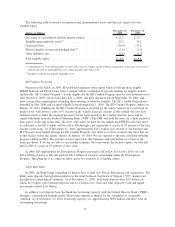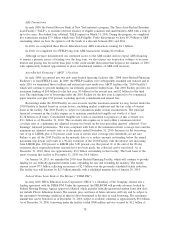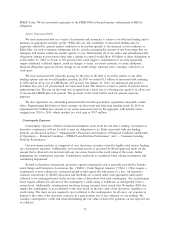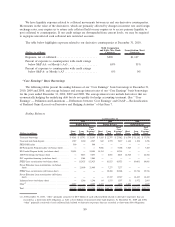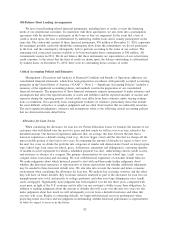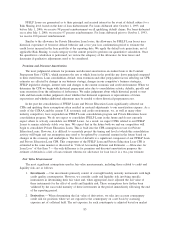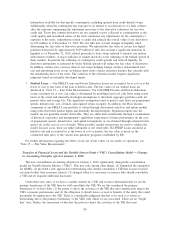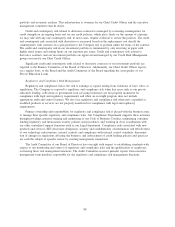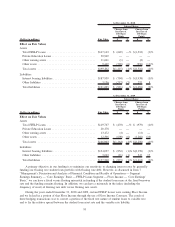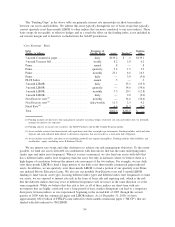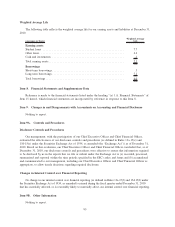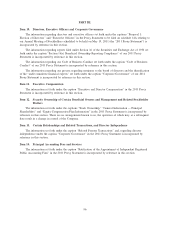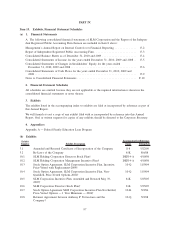Sallie Mae 2010 Annual Report Download - page 88
Download and view the complete annual report
Please find page 88 of the 2010 Sallie Mae annual report below. You can navigate through the pages in the report by either clicking on the pages listed below, or by using the keyword search tool below to find specific information within the annual report.delivery channels do not fit with our operational capacity, customer demands or strategic objectives.
Operations risk can increase with the implementation of new information technology to support a new,
expanded or modified product or service. Failed or flawed technology, either from error, inadequate capacity
or fraud, may result in the inability to deliver products or services.
Operations risk is managed by our managers with assistance and training provided by our centralized
support functions. Additionally, the operations risks associated with new products and services, the security
and confidentiality of information, the effectiveness of our technology infrastructure, the emergency loss of
technology and other infrastructure resources, the monitoring of internal controls and compliance with internal
control standards, and the monitoring and dissemination of changes in regulations affecting the business are
each the subject of executive management review through committees established for these particular
purposes.
The Finance and Operations Committee of our Board of Directors has oversight responsibility for
significant operational risks and receives periodic reports from executive management regarding the effective-
ness of our risk management efforts in this area.
Political and Reputation Risk Management
Political and reputation risk is the risk that changes in laws and regulations or actions negatively
impacting our reputation could affect the profitability and sustainability of our business.
Management proactively assesses and manages political and reputation risk. Our government relations
team of employees manages our review and response to all formal inquiries from members of Congress, state
legislators, and their staff, including providing targeted messaging that reinforces our public policy goals. We
review and consider political and reputational risks on an integrated basis in connection with the risk
management oversight activities conducted in the various aspects of our business on matters as diverse as the
launch of new products and services, our credit underwriting activities and how we fund our operations.
Significant political and reputation risks are reported to and monitored by the Finance and Operations
Committee of our Board of Directors.
Competition Risk Management
Competition risk is the risk of losing market share or the lack of market acceptance of our products due
to our competitors competing more effectively. Management closely monitors competitors and conditions. We
follow changes in product pricing and features and track marketing activity across a variety of distribution
channels. In addition, we measure category participants’ brand recognition among key consumer groups. We
continuously evaluate the size of the market and analyze market developments and trends that may impact
future demand for student loans.
Significant market competition risks are reported to and monitored by the Finance and Operations
Committee of our Board of Directors.
Credit and Counterparty Risk Management
Credit and counterparty risk is the risk of loss stemming from one party’s failure to repay a loan or
otherwise meet a contractual obligation. We have credit or counterparty risk exposure with borrowers and co-
borrowers with whom we have made Private Education Loans, the various counterparties with whom we have
entered into derivative contracts, the various issuers with whom we make investments, and with several higher
education institutions related to academic facilities loans secured by real estate.
The credit risk related to Private Education Loans are managed within a credit risk infrastructure which
includes (i) a well-defined underwriting and collection policy framework; (ii) an ongoing monitoring and
review process of portfolio segments and trends; (iii) assignment and management of credit authorities and
responsibilities; and (iv) establishment of an allowance for loan losses that covers estimated losses based upon
87


